It is such that data analytics has become essential to the modern decision-making of companies. The explosion of data driven by every possible source: consumer behavior, market trends, operational data, and so forth necessitate the need of the traditional methods of decision-making to be no longer adequate. Faster and precise insights help the businesses to remain competitive. Here Artificial Intelligence (AI) comes in, which leads to an incredible spur in the way organization processes the facts, identifies the patterns and makes choices.
Understanding Data Analytics in Decision-Making
What is Data Analytics?
Data analytics refers to the process of analysing raw data with a view of making a conclusion about such data. In business, it can be applied to enable informed decisions using data to forecast, improve business and undertake trend-setting activities. Conventional methods of data analysis were characterised by general statistics that involved application of human mind towards the detection of trends.
But with the rapid growth of data and its increased complexity, the increased requirements of the more intelligent analysis have given rise to the emergence and employment of such concept and technologies as AI and machine learning as well.
The Role of Data Analytics in Decision-Making
Today decision-making in businesses requires data-driven decision-making (DDDM). It enables the leader to make his or her decision on tough facts as opposed to intuition or guesswork. The use of AI and data analytics helps businesses to make decisions faster and better.
Not only this strategy helps to increase efficiencies in operations, it also helps in refining strategic decisions made on marketing, customer service, inventory management, and financial forecasting.
Historically, decisions were usually based on experience and gut feeling and based on fixed reports. However, due to the increase in data analytics, the decision-making process is now well defined and objective. AI algorithms can make use of real-time data that can enable businesses to respond to trends in near real time.
How AI Enhances Data Analytics for Better Decision-Making
AI with data analytics provides a number of ways of leveraging data analytics to improve decision making. The AI works by efficiently analyzing large datasets and inferring patterns using powerful algorithms to get actionable insights. The following are some of the major ways in which AI enhances decision-making process:
Automation of Data Processing
The time taken to clean and process data is one of the chief concerns that firms with large databases incur when dealing data. Through AI modeling, automation in the data processing processes can be carried out thus making the data cleaning processes, data organization processes, and trends identification processes less cumbersome and time consuming. The AI-based tools also integrate data without taking any effort, and the information which they are pulled out of are based in multiple sources of data, which collectively can be analyzed.
Companies such as Amazon take advantage of the use of AI to organize and clean huge volumes of transactional data. This automation will give them time to use the processed data to get into insights instead of wasting their time to organize it.
Advanced Predictive Analytics
AI models can analyze terms obtained in the past and forecast the possibilities in the future. This forecasting ability enables companies to determine market trends, consumer attitudes as well as casting an eye over business difficulties. Denoting patterns and comprehending the history and present situation, AI models give predictions, which make business leaders make forecasted decisions.
Walmart (or any other company in the retail industry) can predict the demand of a particular product at peak seasons thanks to AI and therefore make the necessary adjustments in managing stocks to avoid stockouts.
Real-Time Insights
AI is very effective in handling data at real-time, giving business leaders real-time information. This proves to be important especially in industries, whose decision-making process is sensitive and requires rapid decisions, e.g., finance, e-commerce, and supply chain management. Real-time AI analysis models enable the business to be fast in adapting the changes in customer behavior, market status, and even economic trends.
Netflix adds value to the user experience, and uses AI to analyze real-time user behavior, and personalize recommendations based on what customers are shedding light on video usage or watching at any given time credit retention.
Personalized Decision Support
AI is able to provide customized suggestions and analysis in line with business requirement. AI-powered tools allow personalizing the insights gained through the analysis of individual datasets and learning the requirements of the particular decision-makers in the organization, making them more personal, therefore, timely and actionable.
When it comes to marketing, AI tools can be used to personalize a campaign based on customer data and their ability to predict what type of content or product that would appeal to a specific customer more than anything.
Reducing Human Bias
In most cases, traditional decision-making process is prone to human biasness as a result of past experiences, emotions, or personal judgment. The biases created due to human limitations are eliminated by AI because it dwells exclusively on data-driven insights. AI models provide more subjective, impartial and, uniform decisions by depending on data and algorithms instead of intuition.
| AI Capability | How It Improves Decision-Making | Business Benefit |
|---|---|---|
| Automation of Data Processing | Reduces the time and resources spent on data cleaning and integration | Increases efficiency and speeds up decision-making |
| Predictive Analytics | Provides forecasts for future trends based on historical data | Enables proactive decision-making and reduces risk |
| Real-Time Insights | Analyzes data in real-time, providing up-to-the-minute updates | Faster responses to market changes and business needs |
| Personalized Decision Support | Tailors insights based on specific business needs or roles | Ensures that decisions are relevant and actionable for each department |
| Reducing Human Bias | Removes human error and bias from decision-making processes | Ensures objective, fair, and consistent decision-making |
Key AI Models for Enhancing Data Analytics
There are a number of AI models which are employed in business data analytics to enhance decision-making. Such models are based on machine learning algorithms which enable a business to make the right guesses, see patterns, and automatize operations. Which are some of the most popular AI models applied in decision support? Let us examine some of them.
Machine Learning (ML) Models
Machine learning is a branch of AI, which treats the case of training algorithms to learn data. Businesses use several types of ML models that include:
-
Supervised Learning: Used for prediction and classification tasks where the model learns from labeled training data.
-
Unsupervised Learning: Identifies hidden patterns in data without labeled outputs.
-
Reinforcement Learning: Helps AI learn by rewarding it for making accurate decisions and penalizing it for incorrect ones.
Best For: Predictive analytics, customer segmentation, and demand forecasting.
Deep Learning (DL) Models
Neural networks with several layers are applied in Deep learning as a subcategory of machine learning to learn complex patterns in large volumes of data. The models are good at working with unstructured data such as images, text and speech.
Best For: Customer sentiment analysis, fraud detection, and image recognition.
Natural Language Processing (NLP)
NLP is a variety of AI that allows machines to interpret and comprehend the human language. Through NLP, AI systems can decompose data in the form of text, including customer feedbacks, social media statements, and support requests, and generate insights.
Best For: Sentiment analysis, text classification, and chatbots.
Decision Trees
Decision tree is a model of supervised learning which classifies data and makes predictions based on a tree like graph of decisions. Such models are applicable in a decision support system where a decision should be arrived upon when the findings depend on several conditions.
Best For: Risk assessment, financial modeling, and customer classification.
| AI Model | Key Features | Business Use Case |
|---|---|---|
| Machine Learning | Learns patterns from data to predict future outcomes | Demand forecasting, predictive maintenance, risk management |
| Deep Learning | Uses neural networks to analyze complex datasets | Customer sentiment analysis, fraud detection |
| Natural Language Processing | Analyzes text data to understand human language | Chatbots, text classification, sentiment analysis |
| Decision Trees | Decision-making based on multiple conditions | Risk assessment, decision support, financial modeling |
Real-World Applications of AI-Driven Decision-Making
Artificial intelligence has already demonstrated its usefulness in other sectors by improving the making of decisions. How about getting to grips with the way that AI is disrupting decision-making when it is applied to business reality?:
Retail and E-Commerce
AIs enable retailers to make more informed choices regarding stock, costs and consumer behaviour. AI can also suggest the correct level of stocks, dynamic price models, and targeted promotions by focusing on previous buying histories and the personal communication between customers and the company.
Amazon employs artificial intelligence to make personal product suggestions, streamline the stock and even forecast the delivery time so that customers have a fast and efficient delivery process.
Healthcare
Artificial intelligence (AI) is applied in healthcare to determine how a patient is treated, the allocation of resources and even diagnosis. Healthcare practitioners can also use AI-driven tools to analyze medical records and find out what is wrong with the imaging material and understand the outcomes of the patients to make sound decisions regarding how to treat them.
IBM Watson Health is an AI-based system that examines the medical data and provides tailored treatment plans to cancer patients and enhances the efficiency and efficiency of treatment.
Financial Services
Harnessing of AI in financial industry is transforming the decision-making process especially in the field of credit scoring, fraud detection and in investment management. Financial institutions use AI models to perform risk analysis, identify market fluctuations, and point out fraud transactions.
JP Morgan chase makes use of AI to forecast the market trends, evaluate credit risk and streamline financial transactions, enhance efficiency and accuracy of operations.
Manufacturing
In production AI-enabled problem solving models are being used to streamline production lines, eliminate waste and anticipate machine breakdown. Using the data collected by machines and sensors, AI can detect the time when the machine might need maintenance so that the business could initiate it before a potentially expensive malfunction takes place.
Siemens is able to know when its manufacturing equipment need to be serviced beforehand using AI so that this does not disrupt operations as the company is expecting.
| Industry | AI Applications in Decision-Making | Business Impact |
|---|---|---|
| Retail & E-Commerce | Personalized marketing, inventory optimization, dynamic pricing | Increased sales, optimized stock levels, better customer satisfaction |
| Healthcare | Patient care predictions, treatment planning, diagnostic support | Better patient outcomes, efficient healthcare delivery |
| Financial Services | Credit scoring, market predictions, fraud detection | Reduced fraud, improved investment strategies |
| Manufacturing | Predictive maintenance, production optimization | Reduced downtime, increased efficiency, lower maintenance costs |
Overcoming Challenges in Implementing AI for Decision-Making
Though AI has unlimited potential, most companies usually experience numerous challenges in the course of incorporating the AI models in their decision-making applications. The following represent the top 10 challenges and solutions to taking care of them.
Data Quality and Accessibility
AI models are data dependent and poor data quality has a direct impact in the performance of the model. Incomplete, erroneous, and inconsistent data may cause biased or unreliable revelations, ruining the decision-making process. Moreover, companies can also suffer at getting clean, sorted data particularly in case it is sitting within various departments or systems.
To address this difficulty business leaders should place governance of data at the forefront. This is characterized by introduction of data cleaning procedures, production of centralized data warehouses and that data should be available enterprise-wide. Organizations ought to also invest in those tools that aid in data integration, including data lakes and data platforms in the cloud to simplify data access.
Skills and Expertise Gap
Machine learning and AI need knowledge in data science, programming, and institute algorithm building. Companies that do not have personnel with in-house expertise might not implement and streamline the AI models necessary in making decisions. Recruitment, as well as training, is an expensive and time-consuming process.
Resistance to Change
The acceptance of AI is usually subject to staff resistance especially by employees who are used to traditional decision-making approaches. Workers can be insecure concerning the effect of AI on their jobs or afraid to lose the sense of power and be unable to influence the decision-making process. Such cultural resistance may be an impediment to successful adoption of AI in business.
To deal with that, it is therefore important to convey the advantages of AI to staff in a clear manner. To acquaint the employees with the benefits of using AI, it is possible to teach them and engage them in the process of implementing it. AI should be explained to the organizations that it is not a critical tool to make decisions without human opinion. The successful adoption can be achieved by making sure that AI solutions are viewed as supplementary rather than dangerous.
Integration with Existing Systems
The use of AI in current workflows and software sets may be complicated. There may also be difficulties in making business adapt the AI models to the old systems, or it may not have the infrastructure to make the AI-based tools. This may lead to inefficiency, delays and further expenses.
In the course of using AI tools, the companies ought to choose platforms that can easily integrate. To deal with the current enterprise systems most AI solutions are being created to interface with current systems (e.g., CRM, ERP or data warehouses). AI solutions delivered over the cloud have the potential of being flexible and scalable so that organizations can incorporate AI without essentially redesigning their entire infrastructure.
Ethical and Bias Concerns
AI models are not bias-free, particularly whereby the dataset, which is used to train an AI model, is already biased. Artificial intelligence (AI) has the capacity to continue such biases and produce biased or unjust decisions. To illustrate, hiring algorithms may be biased, which leads to an unequal job opportunity or an unfair market forecast.
The way to do that is to make sure that AI models are transparent and explainable (Explainable AI, or XAI), addressing ethical issues. These hazards may be reduced via regular auditing of AI models to find signs of biases as well as diversified and inclusive data. Companies must also make sure that there is some sort of human supervision to the AI decisions in order to ensure that they do not adversely affect society.
| Challenge | How to Overcome It | Business Benefit |
|---|---|---|
| Data Quality & Accessibility | Implement data governance, invest in data integration tools | Improved data accuracy, streamlined access to information |
| Skills & Expertise Gap | Upskill employees, hire AI consultants, use user-friendly tools | Better implementation and optimization of AI solutions |
| Resistance to Change | Communicate AI’s benefits, involve employees in the process | Smoother AI adoption, improved employee engagement |
| Integration Issues | Choose AI tools that integrate seamlessly with existing systems | Reduced implementation costs, faster time-to-value |
| Ethical & Bias Concerns | Ensure transparency, diversify training data, and audit models | Fairer and more responsible AI decision-making |
Summary
AI is not something of the future anymore; it is already present, and it changes the way businesses make decisions underway. In the future, AI is already helping to drive decision-making as it is illustrated through the following: predictive analytics or automation and real-time insights and ethics.
Even though data quality and skills gap issues and resistance to change are present, companies that implement AI-driven data analytics will be put at a benefit. Organizations can utilize AI to not only enhance decision making, but also sustainable growth, innovation, customer satisfaction by constantly adjusting to new AI trends and breaking implementation obstacles.

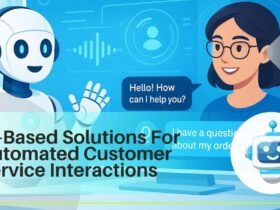
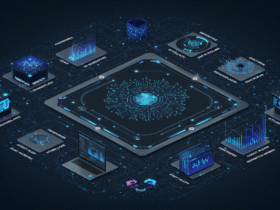
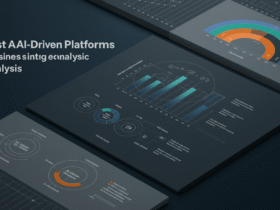









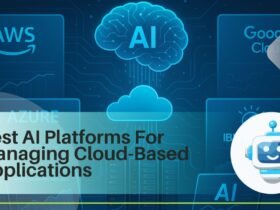

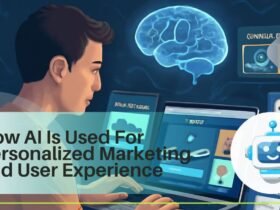
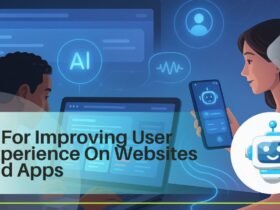
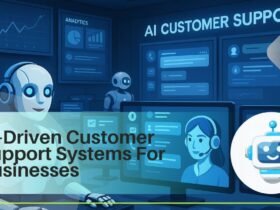

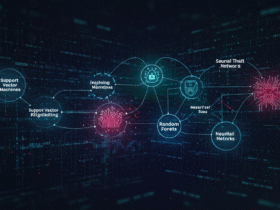









Leave a Reply